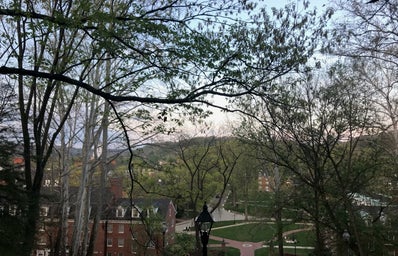If you’re a UVic student that has taken a psychology, sociology or anthropology class, chances are you’ve been in the Cornett building. Chances are also good that you found yourself sprinting from one A-wing to the other A-wing desperately trying to find your classroom, or spent at least 20 minutes trying to find a staircase that actually takes you up to the third floor. For years, UVic students have speculated about what went on during the design process of Cornett. Was the architect trying to make the building look like a human brain? Was there a feud between architect and contractor that led them to combine two different floor plans? Did the architect die in the middle of the construction and the people carrying out his work made a mistake? Like any good journalist faced with story shrouded in mystery and speculation, I set out to find the true story behind Cornett’s design….. it turns out the answer is a little bit boring.
Sorry to disappoint anyone hoping for some juicy gossip about feuding architects or one man’s (because this is the 60’s and the patriarchy was in full swing) dream of designing a social sciences building that mimics the shape of a human brain. The real facts behind Cornett’s design are far less interesting. The mastermind behind Cornett is a man named John A. Di Castri. Unless you’re a really big architecture buff, most of you have probably never heard of Mr. Di Castri, but he’s actually a pretty big name in terms of architecture in Victoria. Not only did Di Castri design the Cornett building on campus, but he’s also responsible for the Interfaith chapel and the original design of the Student Union Building. He also designed Centennial Square and numerous churches around Victoria.
As for Cornett building itself, I came across a few pieces of information that might help to explain the confusion. First of all, to dispel any myths about the architect dying, Di Castri was alive for the entire construction period of Cornett (1966-1967). In fact, he even designed the major addition that took place in 1971. As for the design itself, I came across the following description “the building is a complex that links four distinct architectural elements around an inner quadrangle.” Now, this is just one hypothesis but perhaps it is the “four distinct architectural elements” that caused Cornett to be the maze we have today. Maybe Di Castri’s original intent was to always have four separate buildings, one for each department, and he never anticipated students needing to get from one “architectural element” to another without going outside. If you think about the fact that this building was designed in the ‘60s, a time when a psychology student likely only took psychology classes, he probably wasn’t expecting that students would ever have to leave their department’s designated zone. If they did, maybe he thought they would enjoy being forced to go outside for a brief period of time. It’s also possible that the 1971 addition might have contributed to the current design flaws, but it’s hard to get a sense of what changes the addition created in the original floor plan.
Further digging about the construction of Cornett led me to another possibility. During the construction of the original building, it would seem that two different contractors were used. Of course, there is no way to know why two different contractors were used, but perhaps there was some sort of falling out between Di Castri and the first contractor. Maybe the original contractor wasn’t following the blueprint properly, and so they switched halfway through. Interestingly, the second was the same contractor used for the addition in 1971. So if you’re willing to speculate that something bad went on in order for the original contractor to be replaced, then perhaps there is a bit of juicy gossip after all.
As it turns out, Cornett is not designed to mimic a human brain, nor did the architect die partway through construction. There is the possibility that something happened that caused the change in the contractor, but the most plausible explanation is just that a building designed for a university system in the 1960s just doesn’t function as well in today’s system.
All information about the design and construction of the building taken from http://uvac.uvic.ca/Architecture_Exhibits/UVic_campus/buildings/Cornett/



